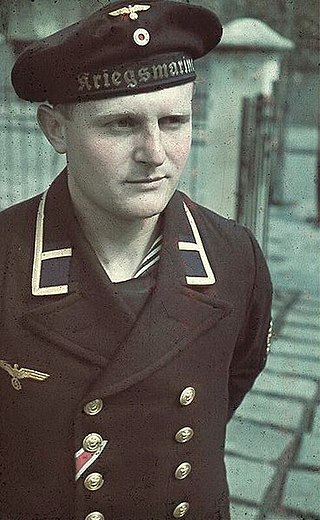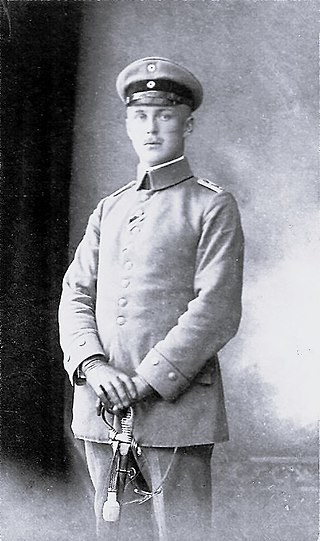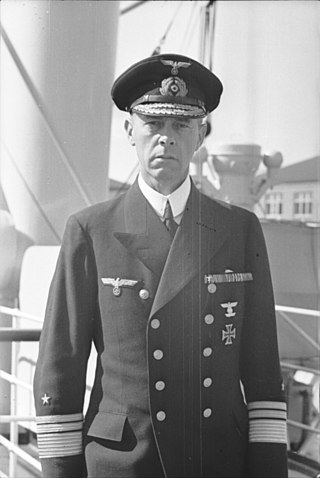
Maat is a naval rank, of German origin, used by a number of countries. The term is derived from the low German māt (comrade). Via the Dutch language, the word became a nautical term and described the assistant to a deck officer. Since the second half of the 17th century Maate were the lowest class of non-commissioned officers aboard a warship.

A non-commissioned officer (NCO) is a military officer who does not hold a commission. Non-commissioned officers usually earn their position of authority by promotion through the enlisted ranks. In contrast, commissioned officers usually enter directly from a military academy, officer training corps (OTC) or reserve officer training corps (ROTC), or officer candidate school (OCS) or officer training school (OTS), after receiving a post-secondary degree.
Feldwebel is a non-commissioned officer (NCO) rank in several countries. The rank originated in Germany, and is also used in Switzerland, Finland, Sweden, and Estonia. The rank has also been used in Russia, Austria-Hungary, occupied Serbia and Bulgaria.
Oberfeldwebel is the fourth highest non-commissioned officer (NCO) rank in German Army and German Air Force.
Stabsfeldwebel is the second highest Non-commissioned officer (NCO) rank in German Army and German Air Force. It is grouped as OR-8 in NATO, equivalent to a First Sergeant in the United States Army, and to Warrant Officer Class 2 in the British Army. Promotion to the rank requires at least twelve years total active duty, of which at least eleven years have elapsed since promotion to unteroffizier, with at least ten years since promotion to stabsunteroffizier, and nine years since promotion to feldwebel. In army/ air force context NCOs of this rank were formally addressed as Herr Stabsfeldwebel also informally / short Staber.
Unteroffizier is a junior non-commissioned officer rank used by the Bundeswehr. It is also the collective name for all non-commissioned officers in Austria and Germany. It was formerly a rank in the Imperial Russian Army.
Bootsmann is a naval rank used in some navies.
This article presents the military ranks of the entire Polish Armed Forces as well as the rank insignia used today. The system of rank insignia is a direct descendant of various systems used throughout history by the Polish Army. Some of the grades trace their name back to the Middle Ages, for instance the rank of chorąży literally means a flag bearer or an Ensign.

Unteroffizier(e) mit Portepee, also Portepeeunteroffizier(e) (transl. Non-commissioned officer(s) with sword knot), is the designation for German senior non-commissioned officers in the armed forces of Germany. The title derives from the French porte-épée ("sword bearer"), as senior enlisted men would historically carry a sword into battle.
Fähnrich zur See designates in the German Navy of the Bundeswehr a military person or member of the armed forces with the second highest Officer Aspirant rank. According to the salary class it is equivalent to the Portepeeunteroffizier ranks Bootsmann (Marine) and Feldwebel of Heer or Luftwaffe.

The Kriegsmarine was the navy of Nazi Germany prior to and during World War II. Kriegsmarine uniform design followed that of the preexisting Reichsmarine, itself based on that of the First World War Kaiserliche Marine. Kriegsmarine styles of uniform and insignia had many features in common with those of other European navies, all derived from the British Royal Navy of the 19th century, such as officers' frock coats, sleeve braid, and the "sailor suit" uniform for enlisted personnel and petty officers.
Oberstabsfeldwebel is the highest Non-commissioned officer (NCO) rank in German Army and German Air Force. It is grouped as OR9 in NATO, equivalent to a Sergeant Major in the United States Army and a Warrant Officer Class 1 in the British Army. Attainment of this rank requires at least sixteen years since promotion to feldwebel and at least six years since promotion to hauptfeldwebel
Oberfähnrich zur See designates in the German Navy of the Bundeswehr a military person or member of the armed forces with the last or highest Officer Aspirant rank. According to the salary class it is equivalent to the Portepeeunteroffizier ranks Hauptbootsmann (Marine) and Hauptfeldwebel of Heer or Luftwaffe.
Stabsbootsmann is the second highest Non-commissioned officer (NCO) rank in the German Navy. It is grouped as OR8 in NATO, equivalent to First Sergeant, Master Sergeant, or Senior Chief Petty Officer in the US Armed forces, and to Warrant Officer Class 2 in the British Army and Royal Navy.
Oberfähnrich designates in the Heer of the Bundeswehr a military person or member of the armed forces with the last or highest Officer Aspirant rank. According to the salary class it is equivalent to the Portepeeunteroffizier ranks Hauptfeldwebel of Heer or Luftwaffe, and Hauptbootsmann of Marine.
Hauptfeldwebel is the third highest Non-commissioned officer (NCO) grade in German Army and German Air Force. It is grouped as OR-7 / OR-8 in NATO, equivalent to US Army Sergeant 1st Class and Master Sergeant. In army/ air force context NCOs of this rank were formally addressed as Herr Hauptfeldwebel also informally / short Hauptfeld.
Stabswachtmeister is in the Austrian Bundesheer a NCO-rank. As lowest grade of the Staff-NCO rank group he is normally dedicated to command a platoon or to serve in a military staff appointment. However, he might also be assigned to command a military squad.
Fähnrich was a military rank in the National People's Army (NPA) of the German Democratic Republic (GDR) including the GDR Volksmarine and Border troops, from 1973 to 1990. The minimum service time to this particular type of military specialist was 15 years.
Hauptbootsmann designates in the German Navy of the Bundeswehr a military person or member of the armed forces. It belongs to the particular rank group Senior NCOs with port épée.
Oberbootsmann designates in the German Navy of the Bundeswehr a military person or member of the armed forces. It belongs to the particular rank group Senior NCOs with port epée.









